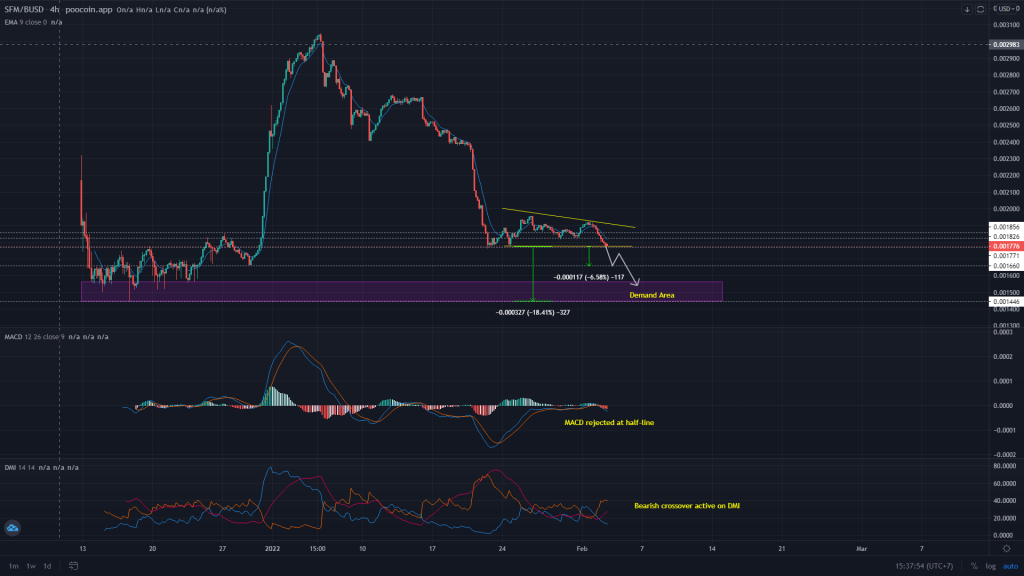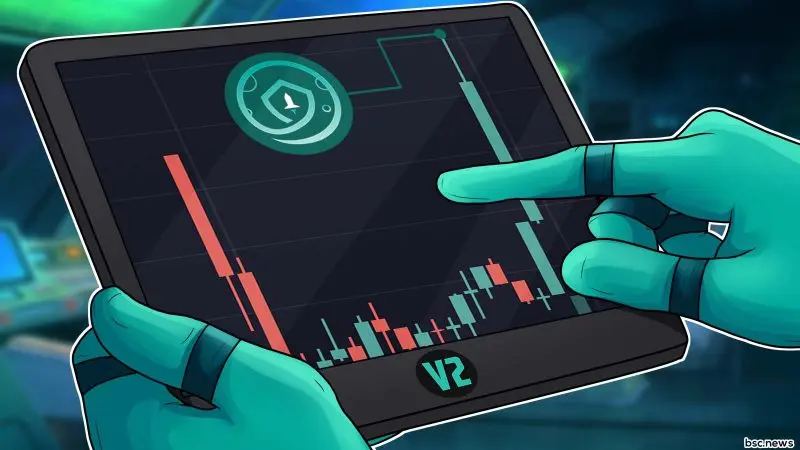SafeMoon V2 sits on the edge of a possible 18% decline after lining up a series of bearish attacks at $0.001768-support. An ideal short trade would be available on the hourly chart once sellers puncture through SFM’s near-term defenses. Those hunting for a cheap buy should wait until SFM retests an area of demand.
At the time of writing, SFM traded at $0.001777, down by 6.5% over the last 24 hours.
SafeMoon V2 Hourly Chart


SafeMoon’s consolidation phase is coming to an abrupt end after sellers formulated a violent attack at the descending triangle’s baseline. An hourly candle below $0.001768 would set a breakdown in motion towards an area of demand between $0.001560-$0.001446. Overall, the decline would paint losses of 18% in a severe outcome.
The expected fall can be capitalized by setting up short trades. A tight take-profit can be set at the first layer of defense at $0.001661, while those with a slightly higher risk apatite can exit their trades between $0.001515-$0.001446. Stop-losses can be set slightly above $0.001826-resistance. The hypothetical trade setups carried a 1.96 risk/reward ratio for less risky maneuvers and a 5.67 risk/reward ratio for riskier bets.
As mentioned earlier, a close above $0.001826 would invalidate the setup. The resulting move would see SFM shift back above its 9-period EMA (blue).
Indicators
SFM’s breakdown would be aligned perfectly with MACD’s rejection above its half-line. The momentum oscillator has traded below equilibrium since 15 January as a powerful downtrend was active in the market.
The Directional Movement Index even flashed an early sell signal. A bearish crossover between the -DI and +DI lines formed once SFM made its second lower high at the upper trendline.
Conclusion
Shorting was the fastest way to profit from SFM’s movement on the hourly chart. However, those unwilling to take such risks can wait for the price to reset within a demand zone between $0.001515-$0.001446.





